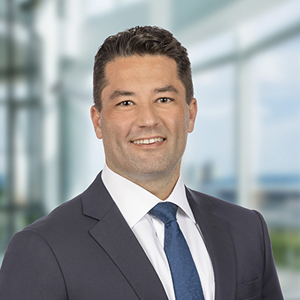Quality in the time of crisis
Market crises tend to come along a lot more often than you think. Sometimes, as with the market slump due, primarily, to the ‘trade wars’, starting in late in 2018 last year, between the US, China, Mexico and, even, Canada, you don’t even think about it as a crisis. But that market slump was greater than the slump in the first quarter of this year when COVID-19 hit.
In a recent research note to its Australian and New Zealand institutional and wholesale clients, global equities manager GQG Partners points to the road to recovery while warning of further black-swan risk ahead. The manager says that a “major crisis” has occurred every 2.2 years over the last two decades. COVID-19 is the “second once-in-a-lifetime” market event in a decade.
There has been a wide dispersion in manager performance during the first quarter when COVID hit, with top-decile large-cap global equities funds down 0.9 per cent, according to Morningstar Australia data for 284 funds, and down 19.8 per cent for the bottom decile. Declines of around 20 per cent or more are hard to recoup. “Tail-risk management has always been crucial,” GQG Partners says, “though it seems so now more than ever.”
The Morningstar Australia ‘World Large Blend’ category suffered a return of minus 10.6 per cent in the fourth quarter of 2018 during the trade wars and minus 9.77 per cent during the first quarter of 2020 with the first phase of COVID. The MSCI ACWI Index was very similar.
The definition of crisis and the time period over which it is measured are important elements in such a study. In terms of what constitutes a crisis, GQG looks at credit spreads, the VIX index for volatility, based on the equity market expectations according to S&P index options, and equity returns. The manager looks at quarters and compares its own performance, as a quality manager, against Morningstar indices.
The client note says: “The frequency of market events and heightened volatility indicate an environment where crisis periods are the new normal. Furthermore, low market visibility leaves stocks open to shocks as prices begin to rebound. It may never feel 100 per cent safe to go back in the proverbial water, and that is okay. We believe investors should instead seek risk-return optimization, focusing on strategies exhibiting both tail risk durability and upside potential…
“There have been two black swan sightings in a decade, reshaping the way many investors view risk. Crisis potential and frequency remain high amid low market visibility. Given the wide dispersion of outcomes, our opinion is investors should consider funds with a history of optimizing risk-return and effective crisis navigation. We believe portfolios should seek out quality at reasonable prices, exhibiting tail risk durability while retaining the potential for upside capture.”
Like all investment styles, quality tends to be cyclical. It tends to outperform in down markets but lag the market in rebounds. Laird Abernethy, managing director of GQG Partners for Australia and New Zealand, said that the firm and its founder, Rajiv Jain, had historically focused on downside protection with its philosophy and processes. Rajiv, who founded GQG, headquartered in Fort Lauderdale, Florida, in June 2016, after a long and successful career at Vontobel Asset Management, had been through 11crises or severe downturns in his career.
The manager’s definition of quality tends to be more prospective than the standard backward-looking definition, he said. “We extrapolate the information over two-three-five years. This broadens the universe of stocks. But it is true we will tend not to outperform in frothy markets.” The firm is long-only equities and the fund’s cash constraint is a maximum of 5 per cent. It does not use options or other derivatives for its protection, relying on stock selection.
– G.B.










